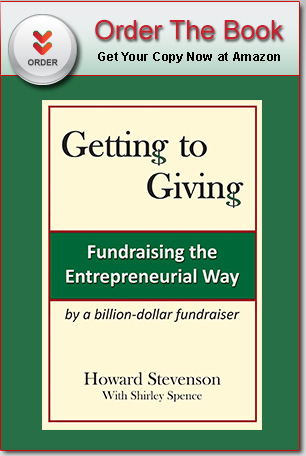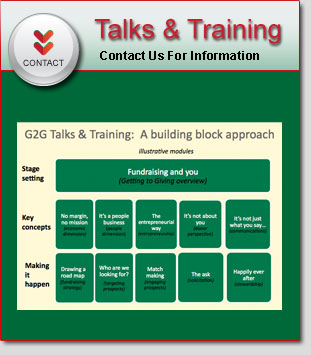When it comes to raising significant gifts, it’s about the journey, not just the destination. And it’s not a day trip; you need to pack a suitcase and whatever else you may need. You choose a travel companion, and plan your itinerary. There are waypoints, where you pause for rest, or provisions, or simply to enjoy the view. It’s a long and windy road, with ups and downs. Things can happen unexpectedly, for better or worse: the weather turns nasty, you encounter a friend you haven’t seen in years, the car breaks down, or you stumble across a breathtakingly beautiful mountain village. A race in contrast, is all about that finish line. Everything is focused on getting there, fast and first.
Building a relationship and crafting a “deal” with a donor can take years. It begins with the first conversation, and ends, ideally…never. It requires adapting to many different situations. It can proceed in stages. There may be one or more “not now’s.” It may involve a “starter gift,” where an individual makes a donation that may be generous but, relative to his giving power, is not a stretch. This is where stewardship is key. You have an opportunity to gain the confidence of a significant gift prospect, and educate him on additional opportunities to partner for your cause.
Individual fundraising can be part of a campaign, which is more race-like, with a shorter, more goal-oriented perspective. A campaign can facilitate individual fundraising by providing a structure, and dedicated support. It offers an excuse for one-on-one meetings, and is a way to energize your donor base, your fundraising professionals, and your internal constituencies. Done properly, it can refocus the organization on its mission, strategic priorities, and key messages. Done poorly, however, it can become mechanical, and stifling.
But, a campaign is more of a scream than a whisper, which can become shrill and lose credibility. It’s hard to go back to someone, for the eighth time, with a “once in a lifetime opportunity.” And, coming back to our definition of nonprofits as entrepreneurships, there always will be opportunities beyond the resources at hand. Campaigns occur relatively infrequently. Fundraisers need to be proactive and opportunistic, in identifying or quickly responding to individuals with an interest in contributing to their cause.
So, it is important not to consider significant gift giving solely in the context of campaigns. It can complement and be part of many fundraising strategies. Bequests, which have even longer time frames, may well involve a significant gift. Even annual giving may be a vehicle, especially at milestones, such as a school reunion. All of these efforts must be coordinated, to maximize significant giving, and minimize confusion and annoyance among donors.



